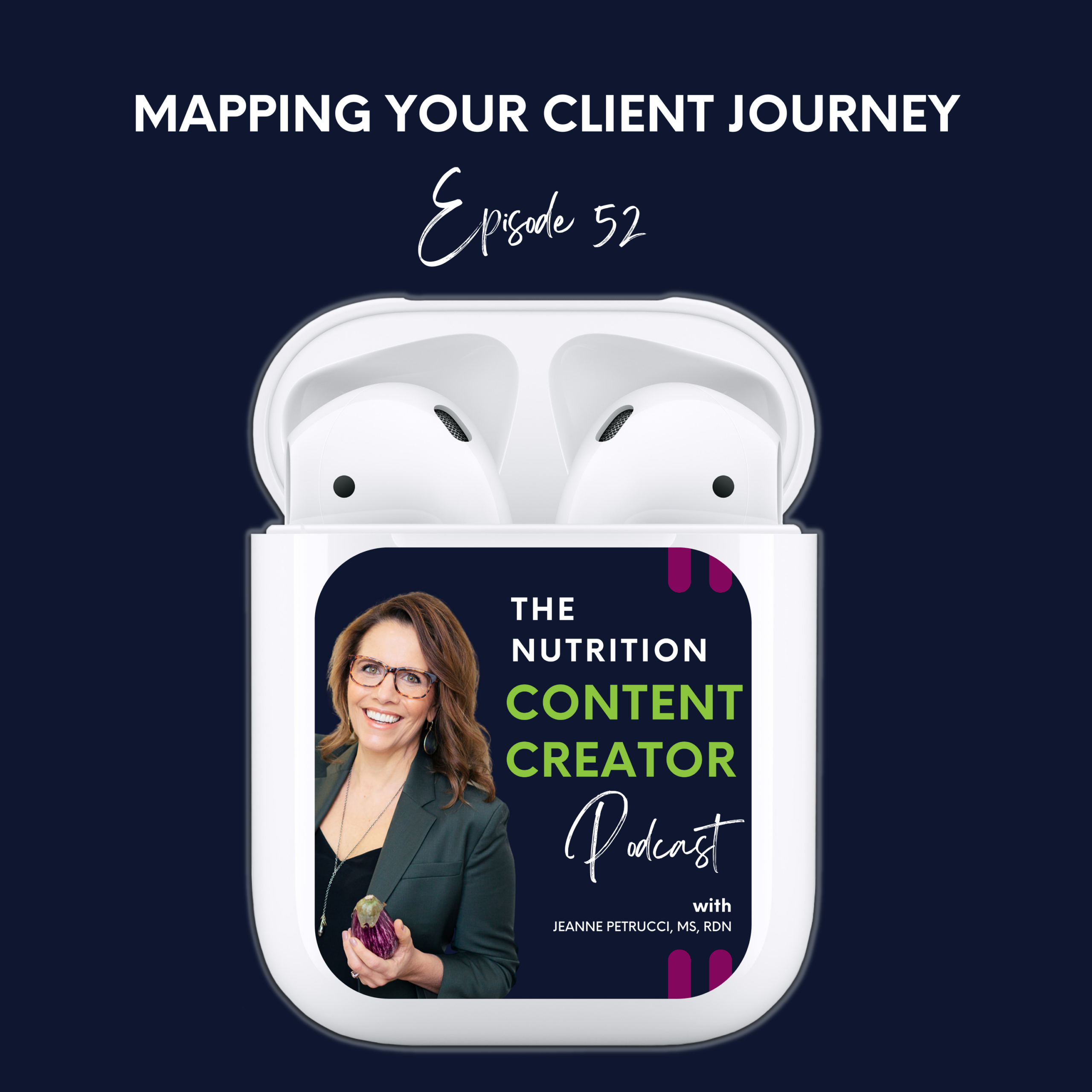20. From Chaos to Clarity: Mastering SOPs in Your Business

Let me share a secret with you – I am not a naturally organized person. Some people (my family and friends) might say I prefer to operate in chaos. I’m more of a “creative” type.
But as my business has grown and we’ve added more community and team members, it has become clear that a next level of order is necessary. An order that comes from well-oiled and documented systems and procedures. So, I began the journey of documenting every – and I mean EVERY – task in my business, big and small six months ago and I’m here to share with you how it’s going.
Today’s episode is a bit of a behind-the-scenes look at something I have undertaken in the past six months. Establishing SOPs (standard operating procedures) for every task in my business.
NOTE: The process I am going to take you through today, I did not undertake on my own. As a fast-growing mid-size business, I needed pros driving this bus. We have a team of professional “organizers” called Online Business Managers who are supporting me in getting it together. If you have a small practice, you can probably tackle this yourself or at least get started using the same process.
We’ll cover:
- Magic of Documenting SOPs
- Applying the 6-Step SOP Framework
- Implementing and Maintaining SOPs
Creativity and Structure
Every creative type knows this feeling well: We’re bursting with fresh ideas and riding the waves of spontaneous inspiration. Yet, sometimes, that same energy seems like a double-edged sword. Why? Because while creativity is fantastic, it’s easy to get swept away in the tide and overlook the need for some good old-fashioned organization.
I used to think that organization might impair creativity and inspiration – but what I have learned is that it makes space for it!
The structure isn’t a creativity-killer. It’s quite the opposite. Think about it: With a clear roadmap, you’re no longer wasting energy trying to remember operational steps or chasing down details. That newfound freedom? It lets your brain breathe and gives you more room to innovate and brainstorm. It’s a liberating paradox—the more organized you are, the more space there is for creativity to flow.
Magic of Documenting SOPs
Three big wins
1. Boosted Efficiency: Imagine running a relay race with a clear, marked track versus one full of obstacles and no clear direction. SOPs give you that clear track. Tasks that once seemed daunting or time-consuming become second nature, a routine you or a support person can power through, boosting your productivity in the process.
2. Five-Star Service: When every step of a process is laid out, there’s no room for guesswork. This ensures you’re delivering a consistently high-quality experience to your clients, every single time. No more, “Did I forget something?” moments!
3. Scaling with Brand Consistency: Ever dreamt of expanding your practice? With SOPs in place, scaling your practice and your brand becomes a whole lot smoother. Instead of grappling with growing pains, you have a blueprint to guide your expansion, ensuring you keep the same quality and essence that made your business special in the first place.
TAKEAWAY 💥: Setting up SOPs isn’t just a business strategy; it’s an investment in your peace of mind, professional growth, and the lasting satisfaction of your clients. This is where strategy meets serenity, and trust me, it’s a game-changer!
Getting Started
The formula for documenting SOPs is quite simple – the hardest part is identifying the tasks in your practice and making the time to document them properly.
Before you begin, place the tasks in your practice into categories such as patient experience, team management, physician partnerships, events, marketing, and referral outreach. Tasks might include patient onboarding, social media, referral processes, follow-up protocol, event marketing, newsletters, and discovery calls. As you start documenting your processes, others will come up that you didn’t think of so just add those to the appropriate categories.
One of the best ways to grasp the concept of SOPs is to map out a task you regularly perform. Let’s take ‘Discovery Calls’ as an example.
Exercise: Mapping the Process of a Specific Task (Example: Discovery Calls)
- Lead Generation: Determine how you’re attracting potential clients. Is it through social media, referrals, or email campaigns?
- Scheduling: Decide on a tool or platform to manage appointments.
- Follow-Up Emails: Automate email confirmations and reminders.
- Conducting the Call: Determine the platform (e.g., Zoom) and prepare a script or a set of talking points.
- Closing the Call: Procedures for making the offer and processing payments.
- Post-Call Follow-Up: Decide on the time frame and method for following up.
- Tracking: Document how you’ll measure the success of the call.
By breaking down each part of the ‘Discovery Call’ process, you’re essentially creating an SOP that can be further refined.
Now, let’s apply the 6-step SOP framework below to our discovery call example:
Apply the 6-Step SOP framework
Step 1: Name Your SOP
- Start by giving your SOP a name that reflects the process you’re documenting.
- Example: Discovery Calls
Step 2: Determine Objective and Scope
- Clearly outline what this SOP aims to achieve and where it will be applied within the organization.
- The purpose of this SOP is to provide consistency during each Discovery Call and increase the chance of a conversion.
Step 3: Identify Stakeholders
- Identify who will be using this SOP, who is responsible for it, and who needs to approve it.
- Add the title of the person responsible for this task, i.e… Sales Coordinator
Step 4: List Resources and Prerequisites
- Make a list of all tools, software, and conditions needed before the procedure can be carried out. Include active links for sign-in or access.
- Practice Management Software – EHR [for booking and conducting discovery calls]
- Excel [for notes and tracking]
- Google documents for script
Step 5: Document the Steps
- Document each action required to complete the task. This can be a simple list, but make sure each step is explicit and actionable – underlined items are active links].
- Block off times in the EHR calendar for discovery call bookings
- Market discovery calls on Website, Instagram, and Facebook pages
- Discover call booked with automated delivery of survey
- Prepare for the call by reviewing survey responses
- Use discovery call script as a guide for call
- Update Excel tracker with notes and conversion data
- Record the process and insert a link to the recording here.
Step 6: Review and Approval
- Once a draft is prepared, it’s crucial to review it with the team members who will be executing it. They can provide valuable insights to improve clarity and efficiency.
- Get final approval for SOP if necessary.
TAKEAWAY 💥: Once you’ve followed the 6-Step Framework for tasks in your practice, you’ll have a comprehensive SOP that not only standardizes processes but also serves as an invaluable training resource.
Implementing and Maintaining SOPs
Setting Expectations
How do you make sure everyone’s following the SOPs? It can be difficult, especially with increased remote support staff.
It starts with setting expectations. Just like you wouldn’t send a team out onto the field without a game plan, you need to make sure everyone knows the plays. That means setting clear expectations from the get-go. Include SOP training as part of your onboarding process for all new contractors or hires. Remember, these procedures aren’t just “nice-to-haves”; they’re the building blocks for how your business operates smoothly.
The Significance of Ongoing Training and Support
You can’t just set it and forget it. Procedures may evolve, new team members come on board, and the business landscape can shift. Ongoing training ensures that everyone stays on the same page. This might be regular refresher courses or ‘SOP of the Month’ reviews. Don’t just leave your SOPs in a file to collect digital dust. Make them living, breathing documents that are an active part of your business culture – I maintain ours in a simple Google Drive folder.
The Necessity of Regular SOP Reviews and Updates
Maybe when you started, you were using a certain software for practice management, and now you’ve switched to another. That SOP you wrote for managing client onboarding? Yeah, it needs an update. Regular reviews of your SOPs ensure that they stay aligned with any changes in tools, objectives, or staff. So, make it a point—maybe every quarter—to review and update your SOPs. And when you do make updates, make sure those changes are communicated clearly to the team. This isn’t busywork; it’s essential maintenance to keep your business machine running smoothly.
TAKEAWAY 💥: By implementing and maintaining your SOPs effectively, you’re not just creating a well-oiled machine—you’re setting the stage for your business to scale, evolve, and adapt for long-term success.
Your Content Cure for This Week
Your Content Cure for this week is Your Ultimate Guide to Creating SOPs for Your Practice.
>> DOWNLOAD YOUR RESOURCES HERE<<
Final Thoughts
The Addictive Nature of Systematizing and Organizing
Here’s the thing—once you get into the rhythm of creating and implementing SOPs, you’ll probably find it hard to stop. It’s akin to cleaning a cluttered room; once you start seeing that clear space form, you’ll want to keep going. The addictive nature of systematizing isn’t a bad thing; it’s a drive that compels you to continuously improve, iterate, and streamline your business.
Emotional Outcomes: Freedom, Relief, Confidence, and Renewed Energy
The emotional payoff of having an SOP bank is huge. Suddenly, your mind is uncluttered, free to focus on creativity and strategy rather than getting bogged down by the daily grind. There’s a sense of freedom and relief as you take these tasks off your mental load. Confidence soars because you know you have a reliable framework for everything. You’re no longer flying by the seat of your pants. And let’s not forget about that renewed sense of energy. It’s incredible how much more productive and energized you can feel when the basic groundwork is laid out for you.
So, if you’re still on the fence about diving into the SOP world, here’s our challenge to you: just start with one. Pick a task that’s a thorn in your side—something that’s always causing hiccups or misunderstandings. Document it, systematize it, and implement it. Feel the change that one SOP can bring to your business and your mental clarity. Once you experience it, you’ll want to systematize everything.
It’s all about taking that first step. Once you’ve broken the ice, you’ll find that the journey ahead is not as daunting as it seemed. So go ahead, make Marie Kondo proud, and start tidying up your business operations. You won’t regret it.

Jeanne Petrucci MS RDN
Founder, Expert Nutrition Content Creator


